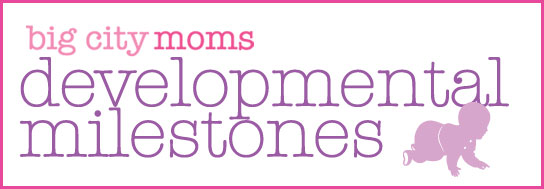
From the First Smile to the First Steps – A Baby’s Motor Development in the First Year of Life
By: Magdalena Oledzka, PT, MBA, PCS, pediatric physical therapist and pediatric rehabilitation section manager at the CA Technologies Rehabilitation Center at the Hospital for Special Surgery in New York
Human nature drives us to move at our own pace from the day we are born. While a baby’s development of important motor skills, such as rolling, sitting, crawling, and walking, usually adheres to a well-chronicled sequence, each baby is unique and follows his or her own timeline based on genetics, time in the womb, family activity and so on. Here’s what parents need to know about motor development—what the first year looks like, milestones to watch for, and when to see a pediatrician or physical therapist.
Newborn to 3 months of age By three months of age, babies should be able to hold their head straight up to look at you and smile. They should start swiping at toys hanging in front of them and turn their head from side to side to follow familiar faces or a toy. A three-month-old baby should be able to spend time on its belly when awake, lifting the head up high while pushing down through the elbows and turning to the side.
Possible Warning Signs:
- Your baby doesn’t hold his or her head up during tummy time
- Your baby favors looking only to one side, neglecting the other
- Your baby doesn’t kick when lying on his or her back
Three to six-months-of-age Three to six months is the magical period when babies start to discover their bodies and close surroundings. Their hand control continues to improve as they practice swiping and grasping at toys, and they’ll begin reaching toward their knees to strengthen the abdominal muscles. As muscle control and strength increases, babies begin rolling independently from back to belly, lifting their head higher and pushing on extended arms to get a better view of their surroundings. By five months of age, they should be able to sit in a tripod (legs spread with both arms out in front as support), and by six to seven months they should be able to sit upright by themselves when placed in that position. Babies at this age also start to engage more cognitively—they will enjoy looking in a mirror and making sounds.
Possible Warning Signs:
- Your baby doesn’t kick his or her legs one by one but always moves them together
- Your baby doesn’t bring his or her legs up toward the hands and mouth to explore them
- Your baby consistently leans forward while sitting
- Your baby can’t roll from back to side and briefly maintain the position
Six to Nine-Months-of-Age Six months is when babies really start to explore, especially since they can now roll back and forth from stomach to back, and sit upright. At this age, they will begin to play with toys placed nearby, especially as balance improves. By nine months of age, babies will play in a variety of sitting postures and can easily move from sitting to their hands and knees. Just before crawling, they will start to move onto all fours and rock forward and back. Some nine-month-old infants will try to stand holding on to furniture and will enjoy being placed in a standing position.
Possible Warning Signs:
- Your baby is unable to maintain sitting independently
- Your baby’s only sitting posture is ring sit or W-sit (sitting with knees bent on either side)
- Your baby is unable to maintain a position on all fours
- Your baby crawls with a bunny-hop pattern
Nine to Twelve-months-of-age Standing and walking are major accomplishments in the last three months before a baby’s first birthday. In this period, babies will practice crawling, climbing, pulling to stand, standing, cruising (holding on to furniture and stepping sideways), walking with support and finally, walking independently. Nine to twelve-month-old infants typically will practice the same movements over and over again to gain strength and control. While some babies may walk at 10 to 11 months of age, taking first steps at 14 to 15 months is still considered within the normal range. If there is a suspected motor delay at this age, typically the signs were present in earlier months but were missed.
Possible Warning Signs:
- Your baby is not walking by 15 months of age
If your child exhibits any of the warning signs listed above, make an appointment with your pediatrician or have your baby evaluated by a pediatric physical therapist. In most cases, the physical therapist will show you ways to encourage your baby’s development through play and positioning. If a developmental delay is suspected, he or she will work with you to design an exercise/stretching plan to incorporate into your daily routine that will help your baby meet each milestone. In most cases, physical therapy treatment will do the trick – and before you know it, your baby will be crawling, scooting or cruising to the next level.
Magdalena Oledzka, PT, MBA, PCS, pediatric physical therapist and pediatric rehabilitation section manager at the CA Technologies Rehabilitation Center at the Hospital for Special Surgery in New York
